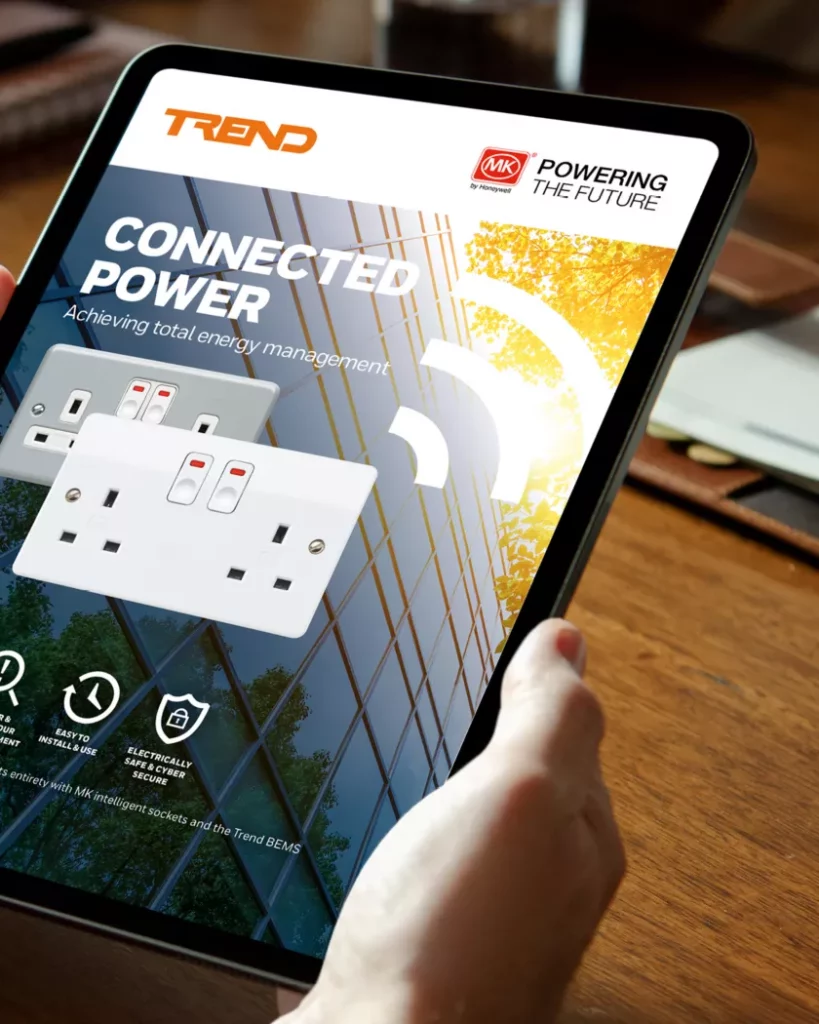Solution from MK Electric and Trend Controls integrates outlet-level electricity use monitoring into a building management system for visibility into previously unknown power consumption

MK Electric and Trend Controls have launched one of the first fully integrated commercial solutions for effective remote monitoring and control of plug-in sources of power consumption for the UK buildings market. Connected Power, the first collaboration between the two Honeywell brands, is designed to easily allow building and energy managers to monitor their site’s use of small power — which can account for more than 25 percent of a building’s energy.[i]
Comprising smart plug sockets and connectivity hubs from MK Electric, the Connected Power solution allows businesses to gain visibility into their buildings’ energy usage, remotely power down unused sockets and automate functions such as scheduling, grouping and alarms. Data is available down to an outlet level, providing more robust information and control of energy use in a building along with other site energy data such as heating, ventilation and air condition (HVAC) and lighting use.
The Connected Power solution has been deployed at several test sites across the UK. Energy efficiency was seen in a number of different building locations by powering equipment only when needed, with evident energy savings once scheduling was applied through the Connected Power solution.
The Connected Power system is also brand agnostic and can be seamlessly integrated into any existing BACNET-based building energy management system (BEMS) for a fully detailed overview of its energy use. Additionally the system will run as an effective stand-alone solution in buildings without the ability to offer a full BEMS integration.
The innovation comes at a time when many businesses are looking for ways to reduce their electricity usage amid the rising cost of energy. Switching to Connected Power plug sockets can help save energy consumed by plug-in devices, by allowing businesses to remotely control sockets and set up alerts, alarms and schedules to power down sockets outside of core hours.
“The impact of small power in a commercial setting can quickly add up, and there are often hundreds of small power devices in an office building, hospital or educational setting that are left on when not in use,” explained Steve Kenny, vice president and general manager, MK Electric. “By working with our colleagues from the Trend team, we can better provide building and energy managers with not only insight into their small power energy use – which was typically unknown – but also allow them to control it, giving them the tools they need to fully manage plug-in power usage.”
Stefano D’Agostino, general manager at Trend, added: “The problem many businesses encounter is that small power loads — the sockets providing electricity to everything from computers and printers to portable space heaters and device chargers — don’t fall under the scope of their BEMS. We are changing that with Connected Power, giving businesses even greater visibility into their site’s energy profile for the first time.”
Connected Power sockets are the same size as standard plug sockets, allowing for easy retrofits. Each hub wirelessly connects to up to 50 sockets and as many as 50 hubs can feed data back to a single BMS or supervisory system, giving a total capacity of 2,500 sockets or 5,000 individual outlets.
Building, Design & Construction Magazine | The Choice of Industry Professionals





